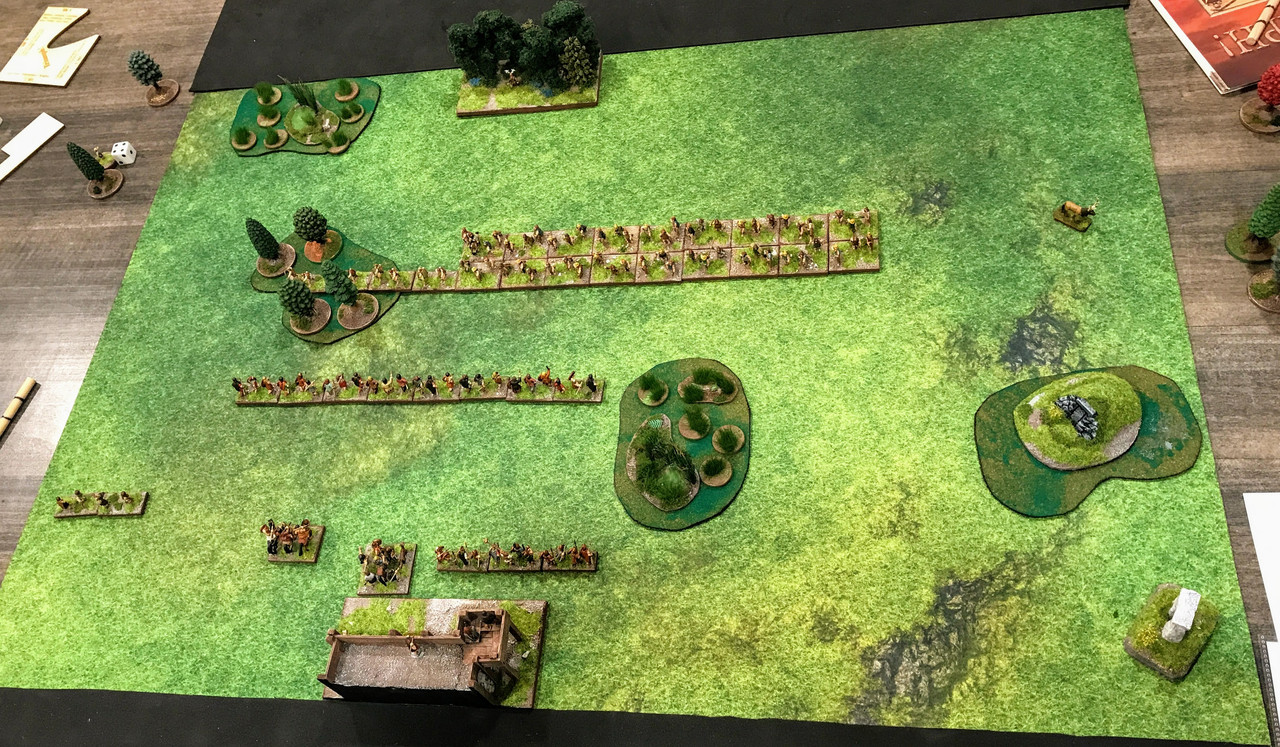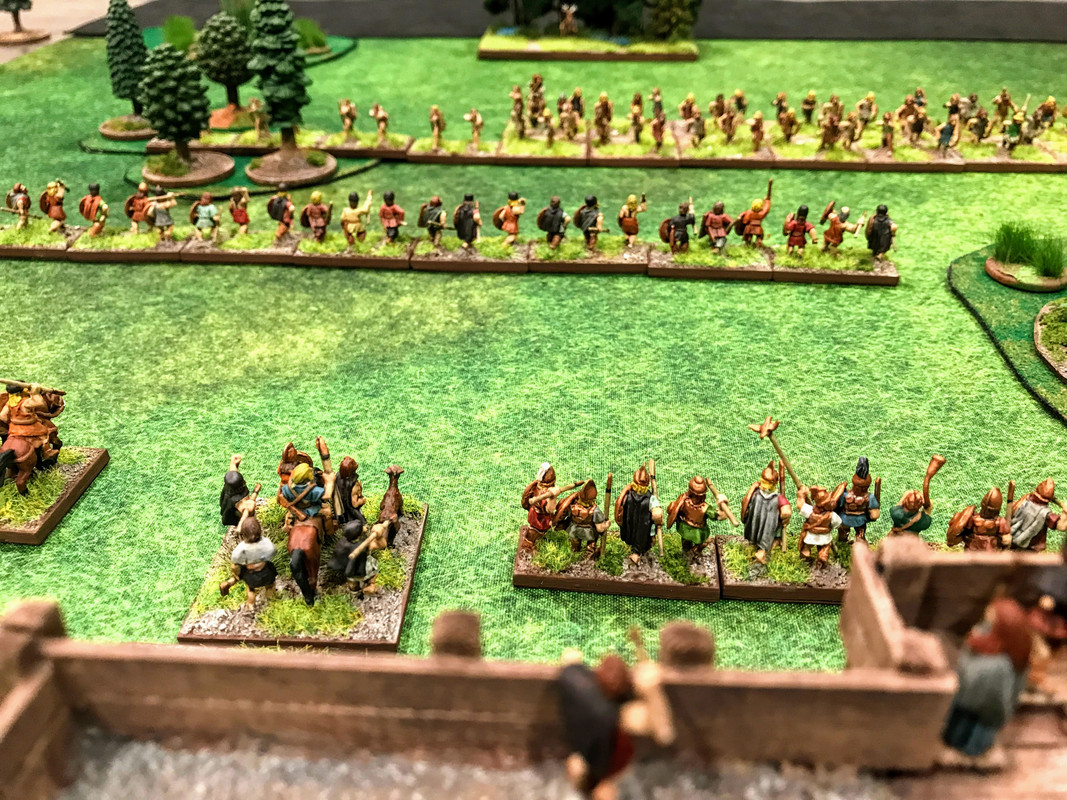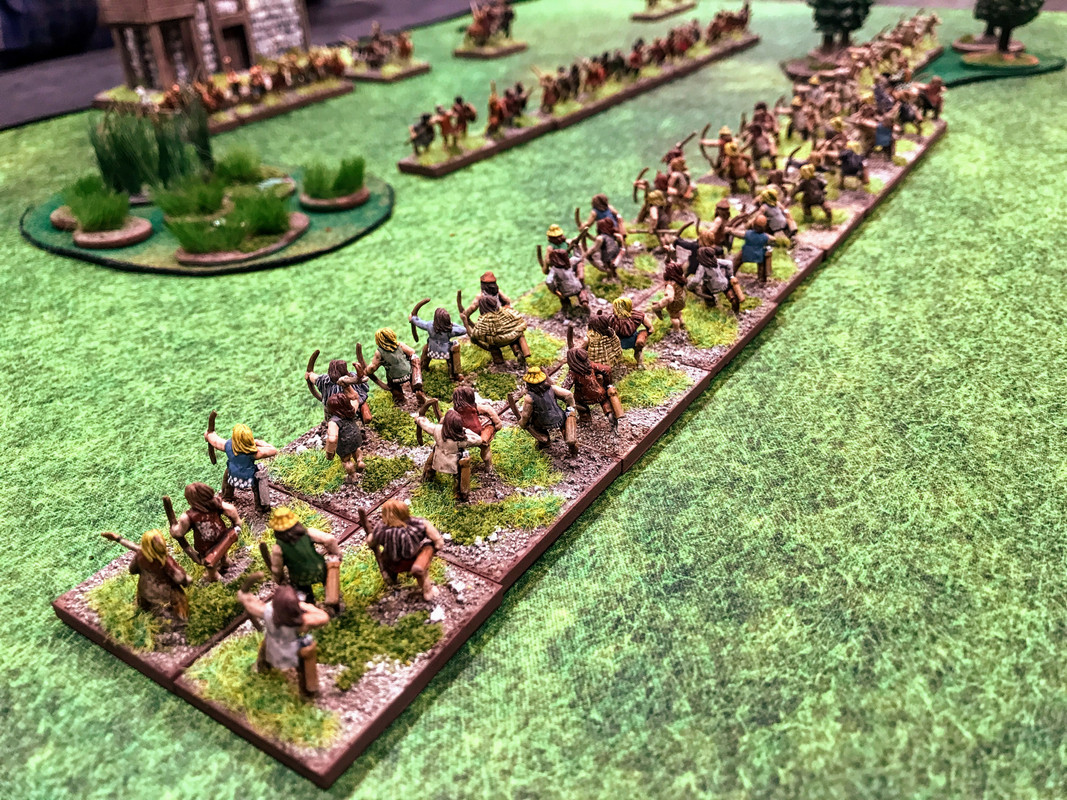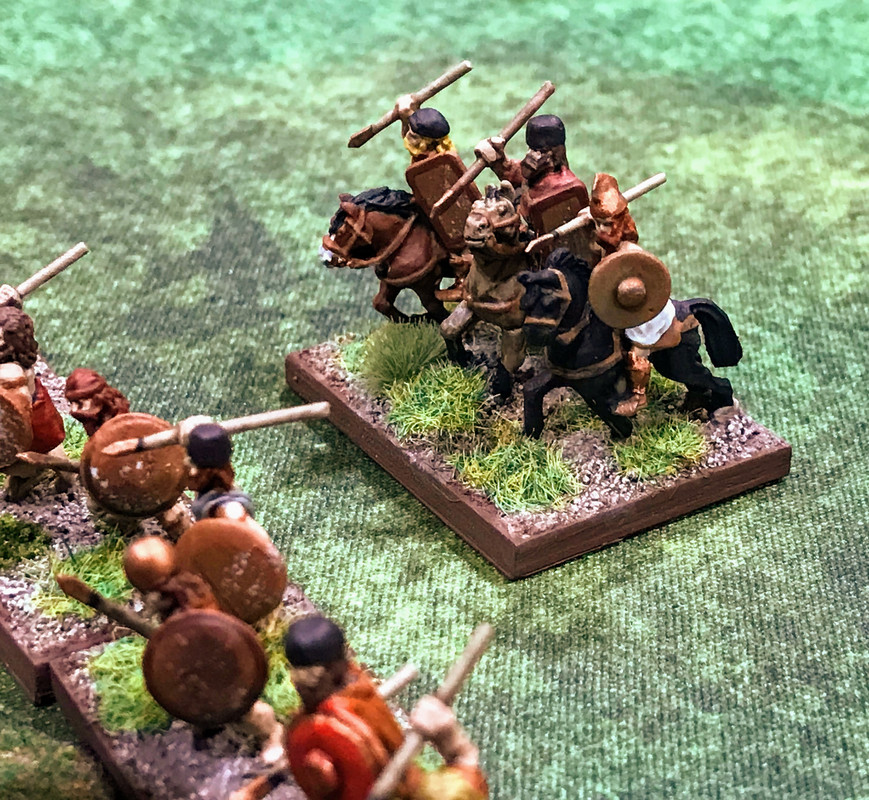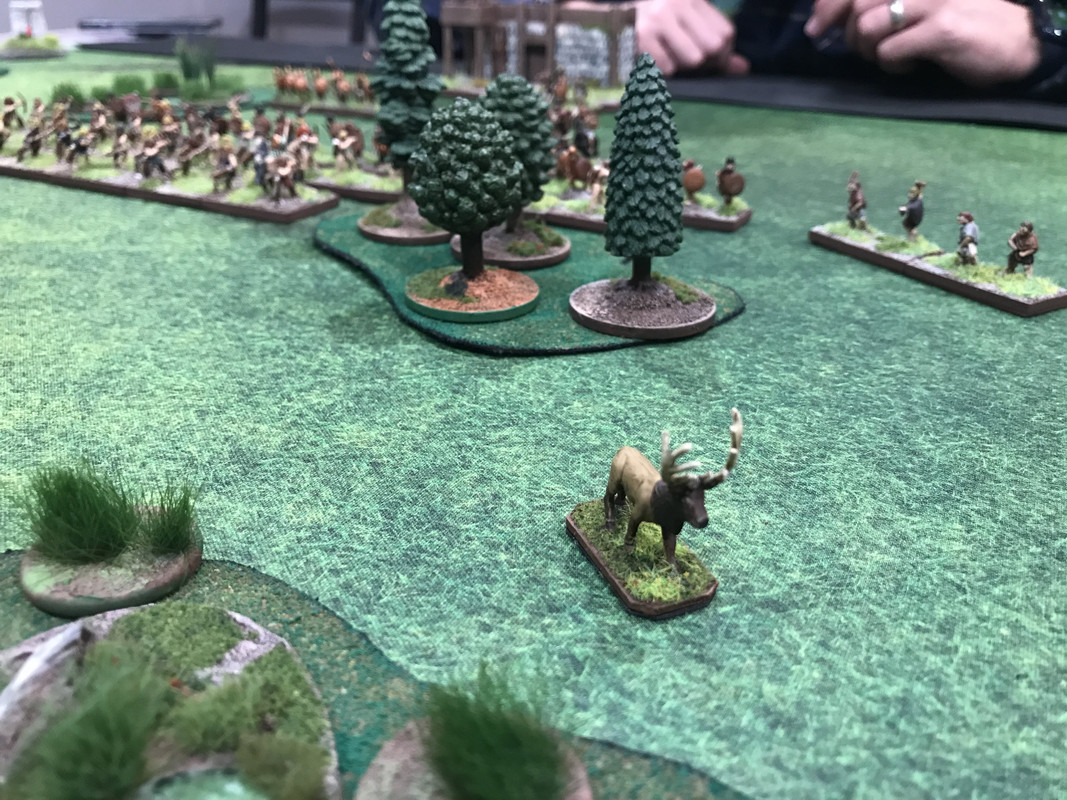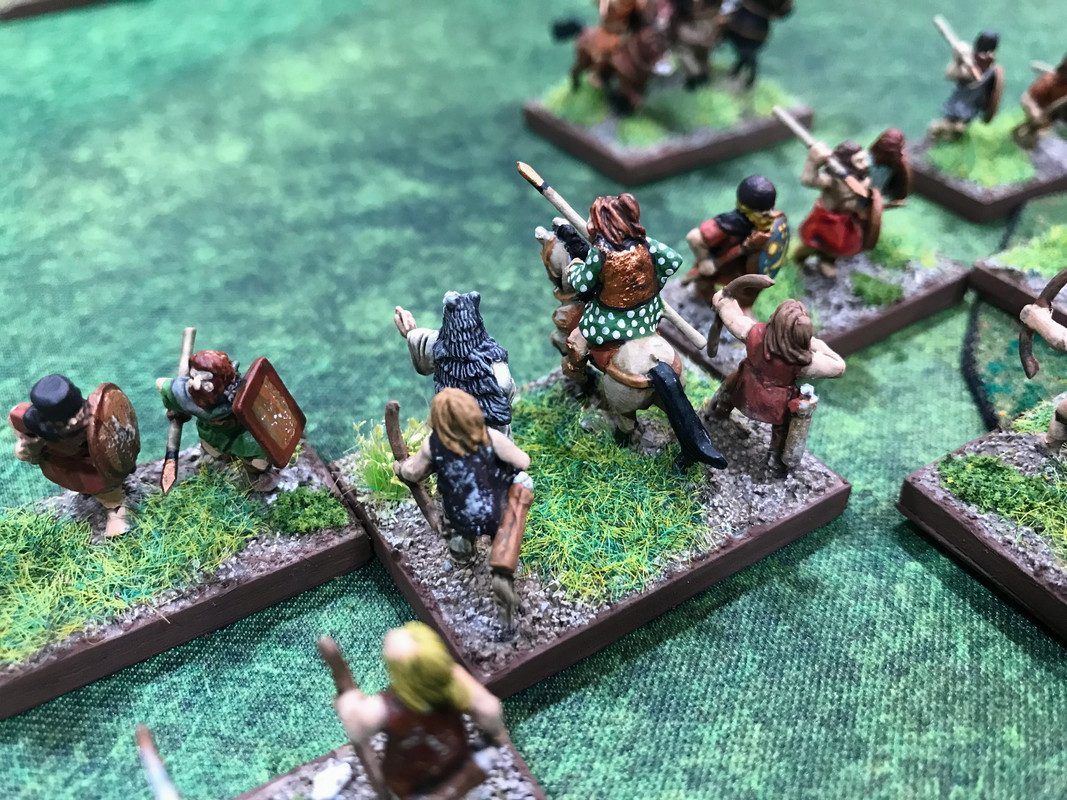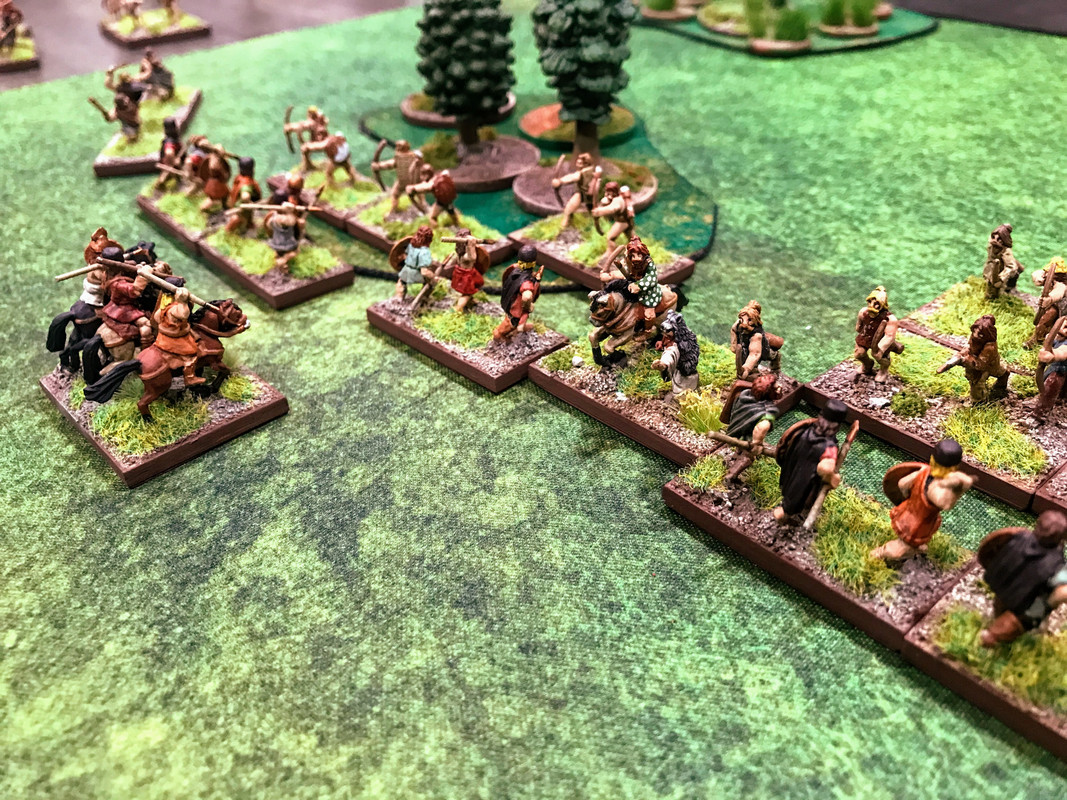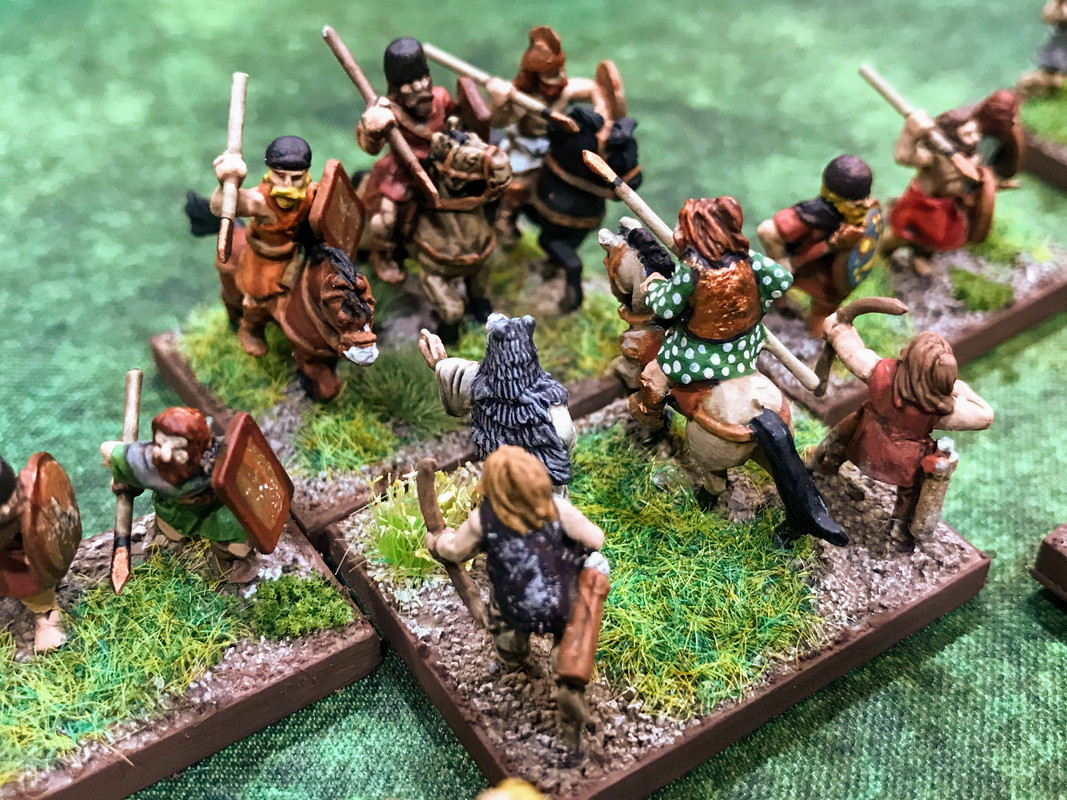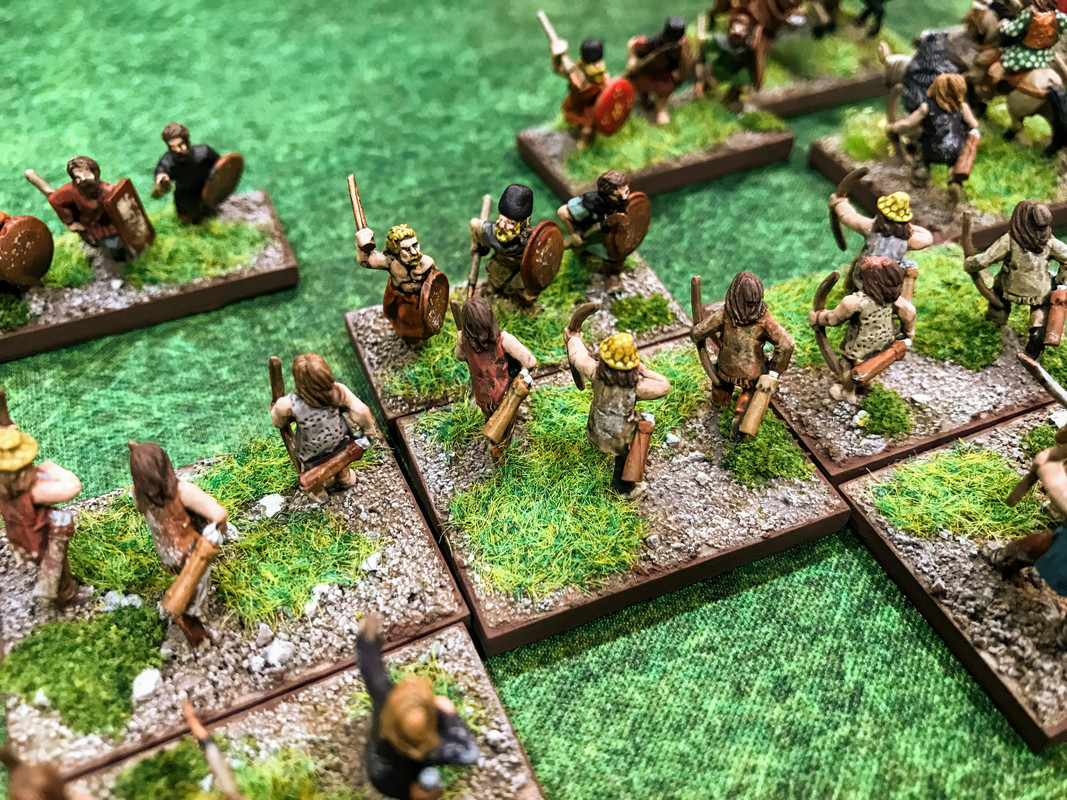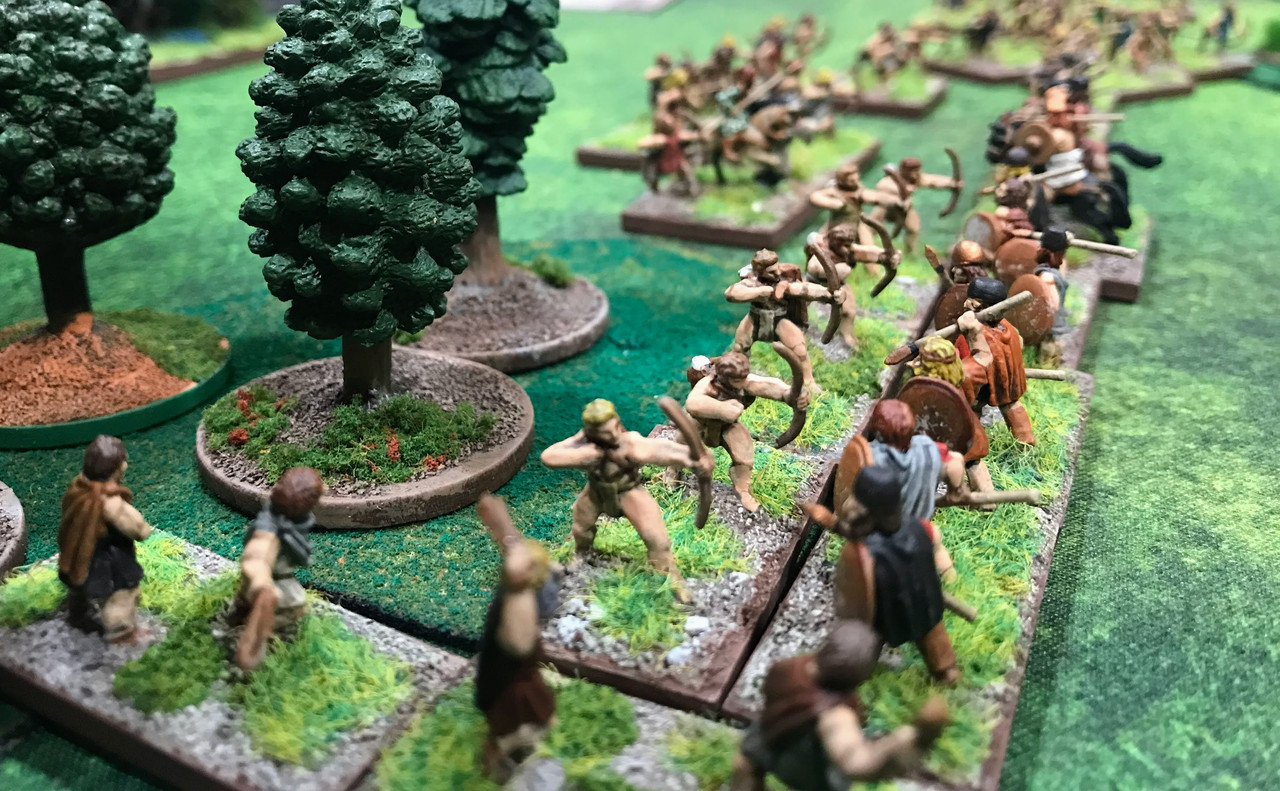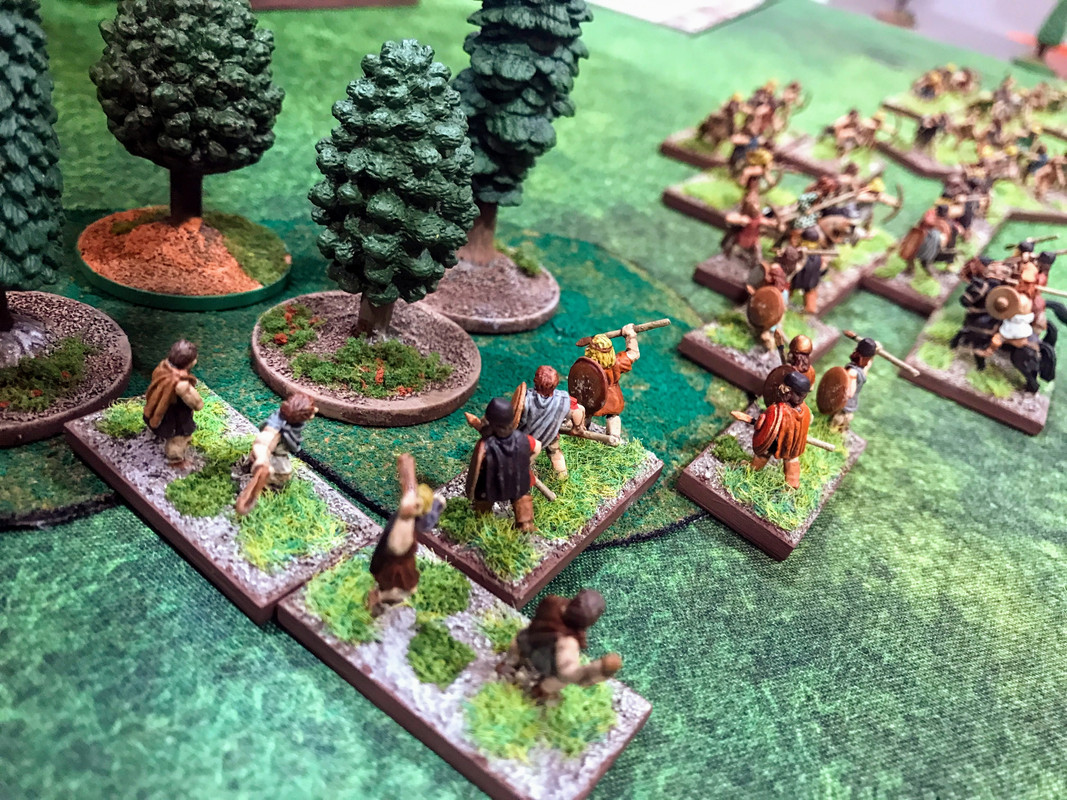My son-in-law and I played two battles of Triumph! on Saturday using my 15mm Early North European Bronze Age and Urnfield Culture armies. The setting was southern England in 1300 B.C. I designed the Early North European Bronze Age army to represent the Bell Beaker Culture that greatly expanded Stonehenge, so for simplicity I will refer to the army as “Bell Beaker” in this report.
The Forces
The Bell Beaker army had eighteen stands of Bow Levy, including the general. They also had four stands of Skirmishers. My son-in-law commanded the Bell Beaker culture army.
The Urnfield Culture forces were three Elite Foot including the general, eight Light Foot, two Skirmishers, one Horde, and one Bad Horse. They also had the Fortifications battle card. I commanded the Urnfield Culture.
The Battlefield
There were six pieces of terrain; four woods and two marshes. Most were along the edges, but one marsh and one wood was in the center of the battlefield and slowed the Urnfield Culture advance.

The Urnfield Culture was the Invader and had the tactical advantage. Their deployment area is on the right in the photograph.
The Stonehenge model and the barrow model are on the board to set the scene and have no effect.
Both camps were centered on the baselines.
Before the Battle

A great stag is uneasy, hearing the sounds of armies approaching.
Deployment
The Bell Beaker forces were spread across the battlefield in small groups, with the general in the center.
The Urnfield Culture forces were organized in three sections: Light Foot and some skirmishers on their left facing the marsh, Elite Foot in the center between the marsh and woods, and more Light Foot and Bad Horse on the right facing the woods. The Horde was left in front of the camp.
Initial Forces Arrayed


Closeups of Deployment
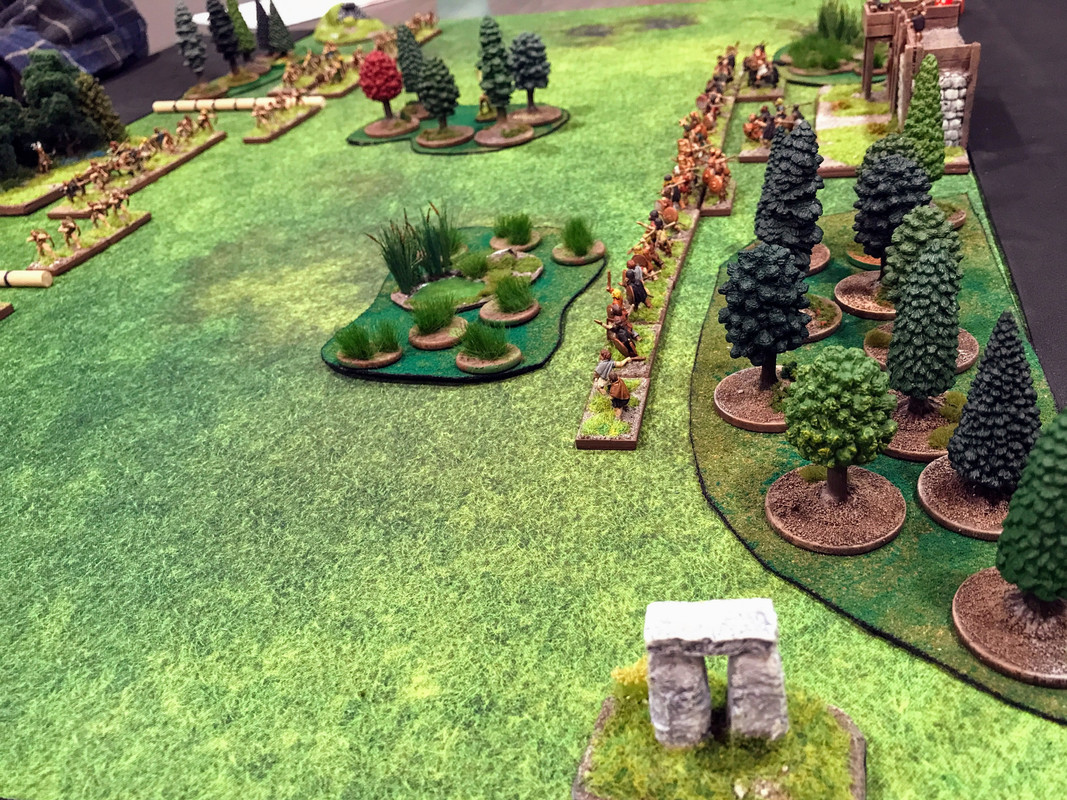

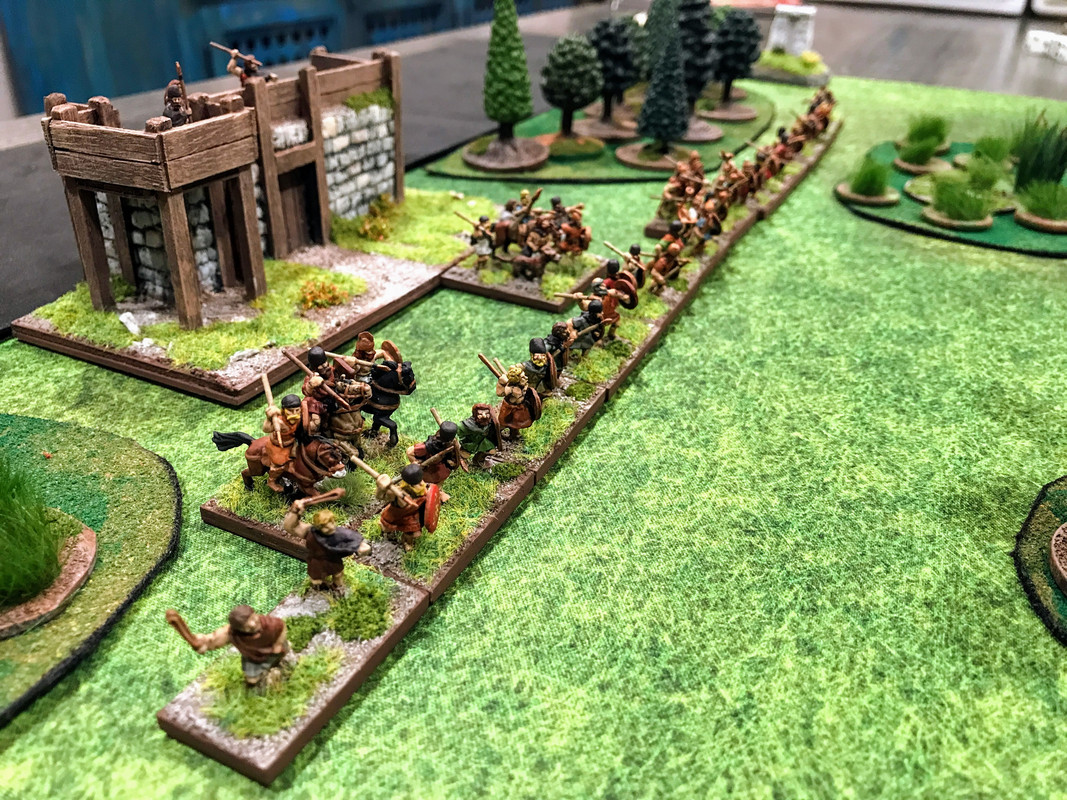
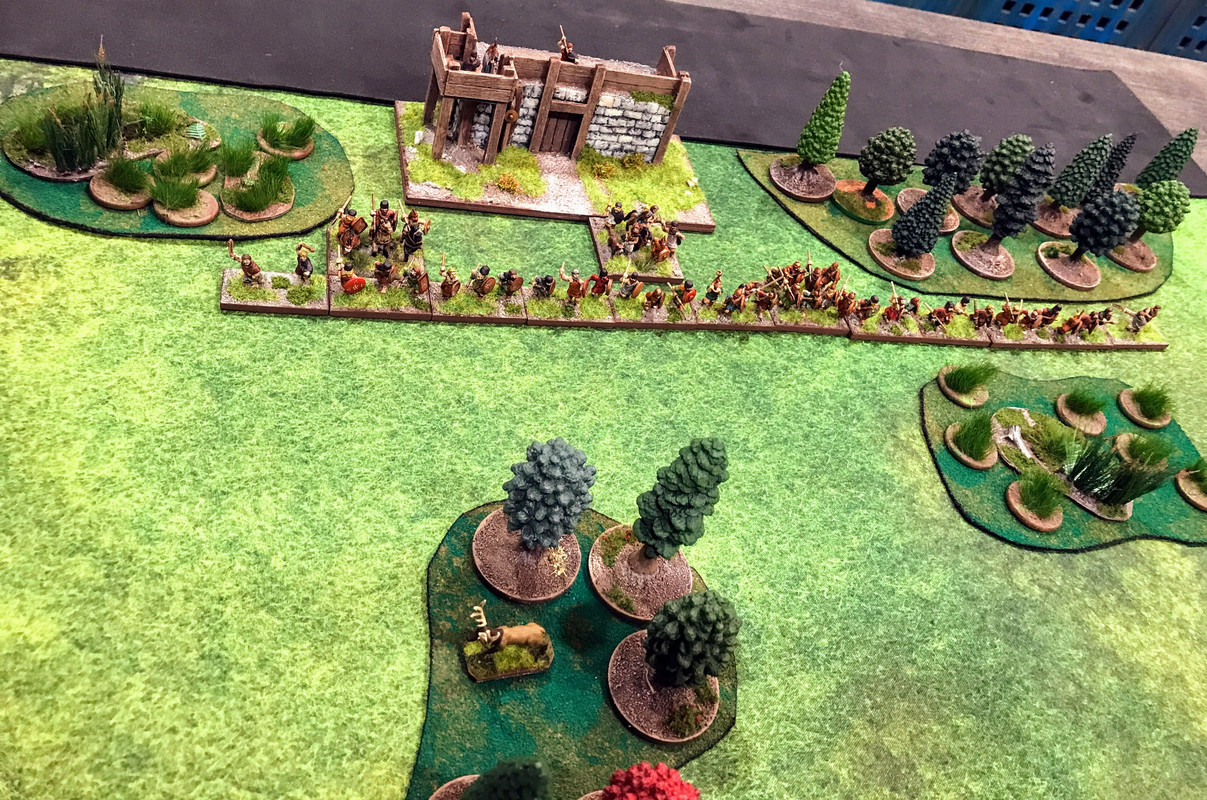

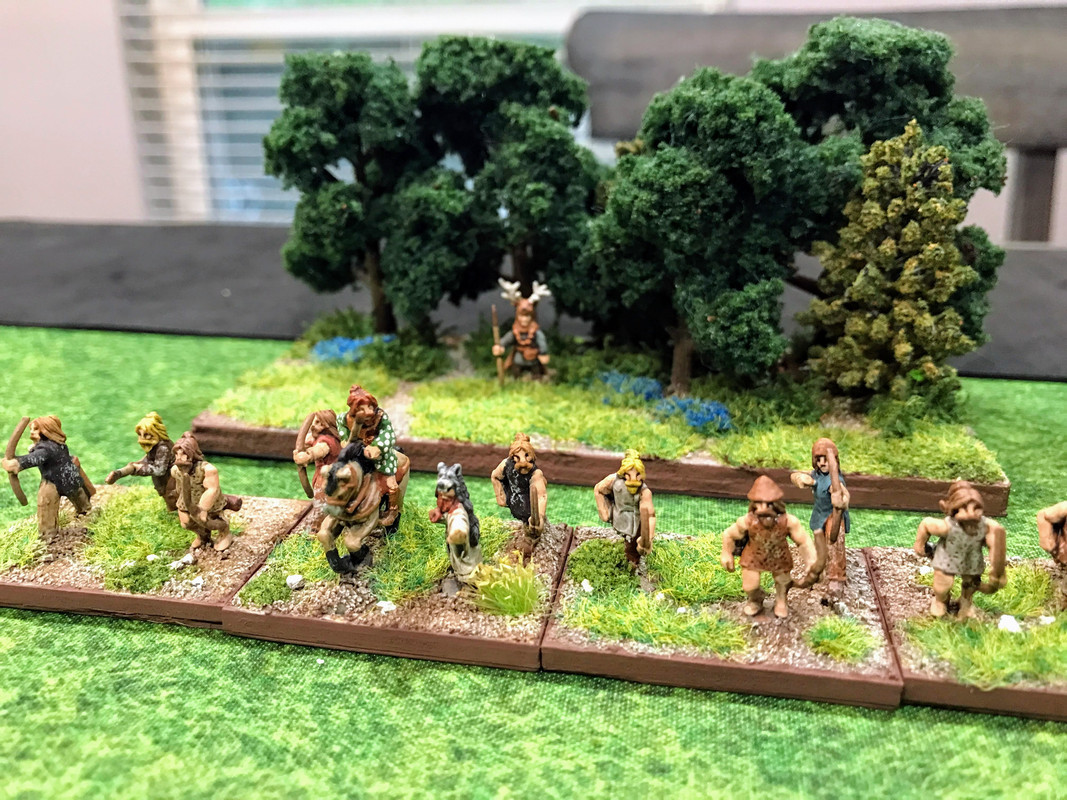
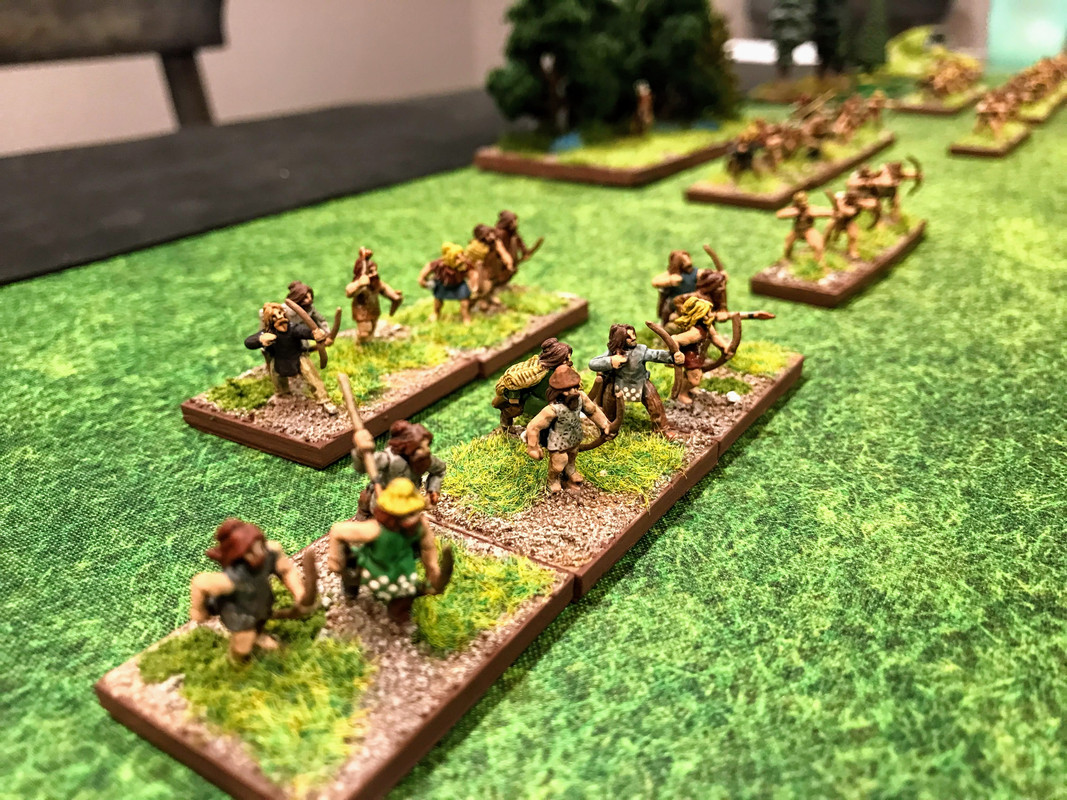
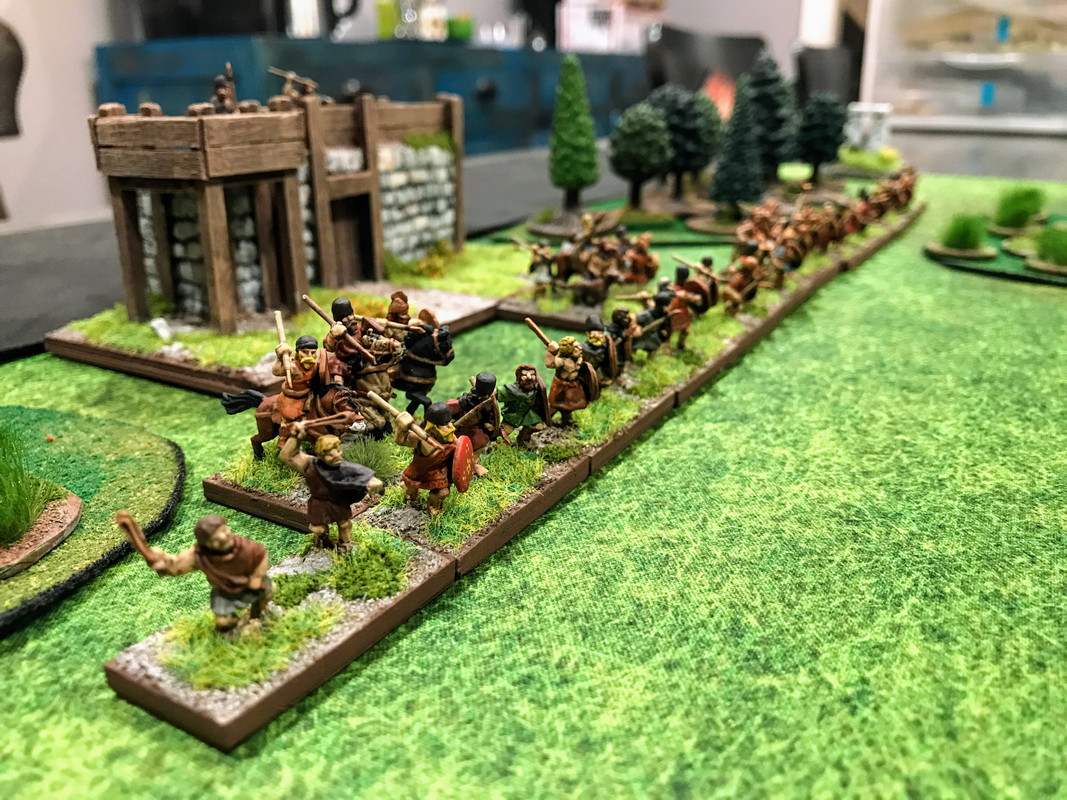


The Battle.

Urnfield Culture troops advance through the marsh on the Urnfield left flank.
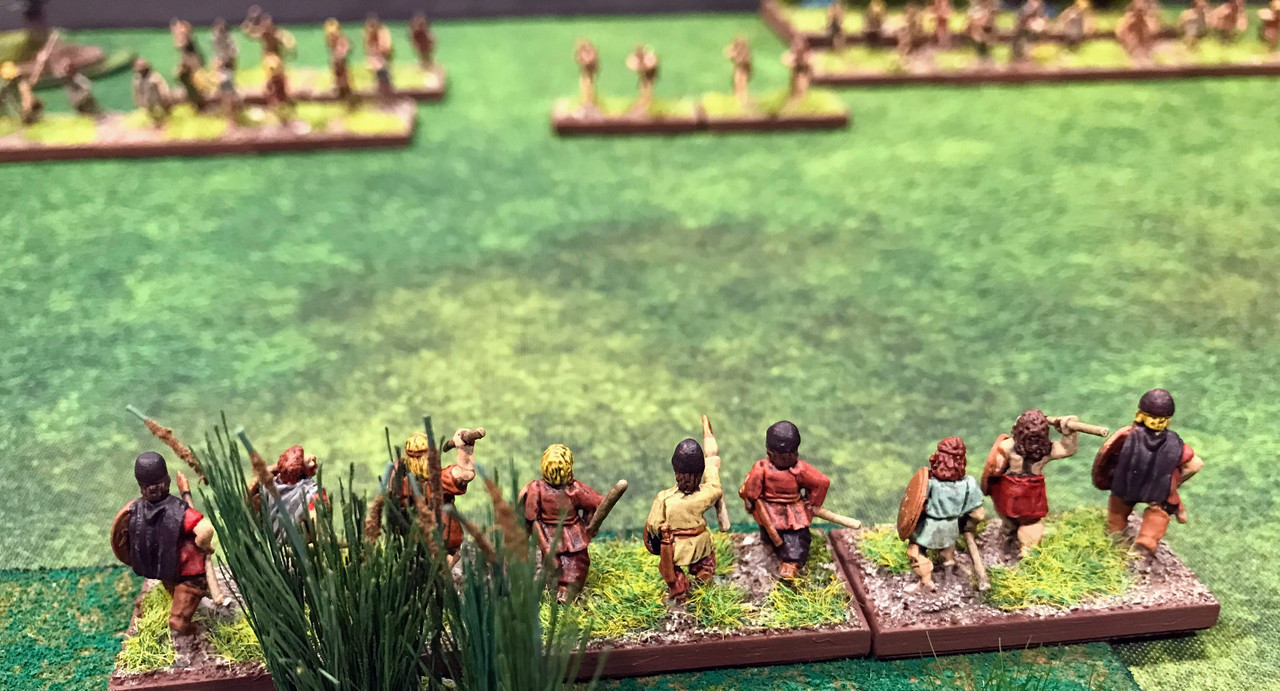
Another view.
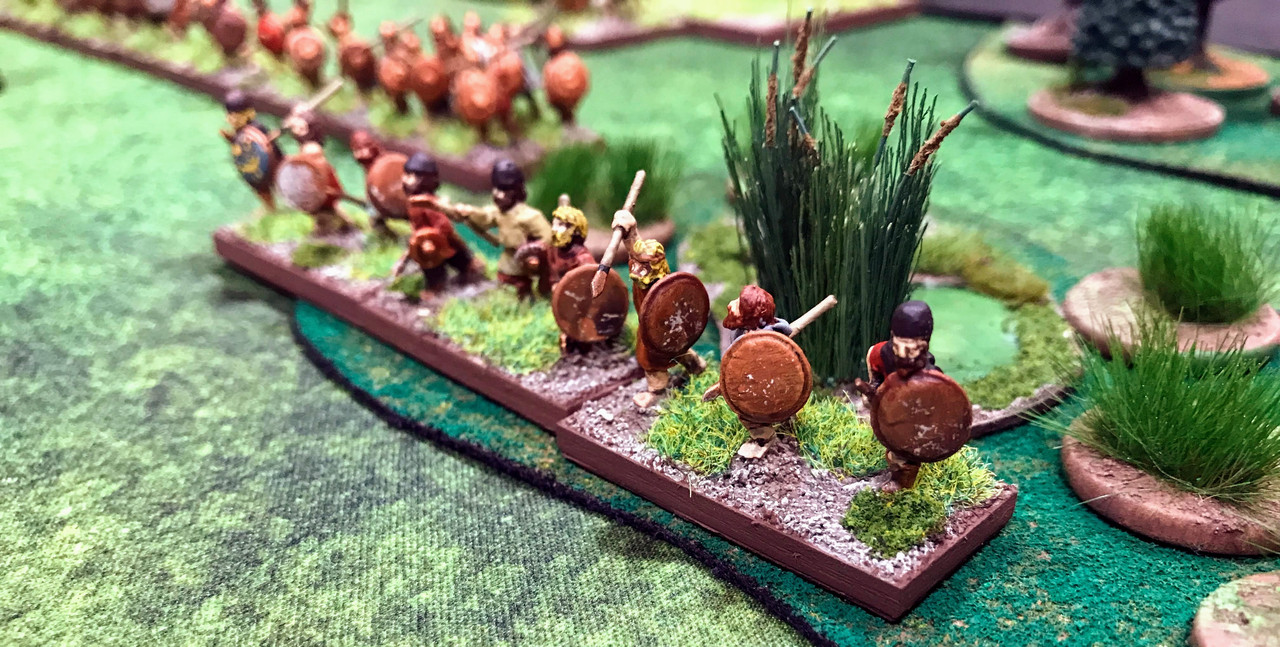
Light Foot nearing the edge of the swamp.

Bell Beaker troops advancing.
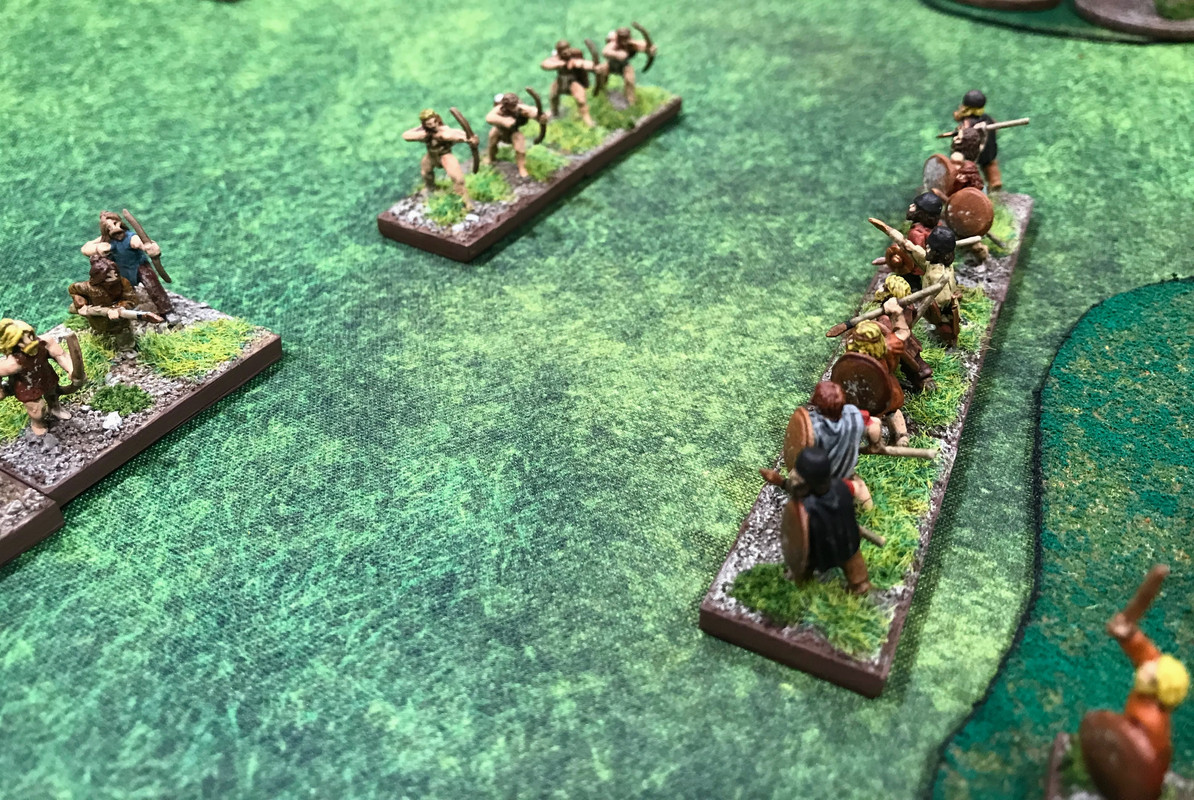
The troops move forward to challenge the Light Foot coming through the marsh.
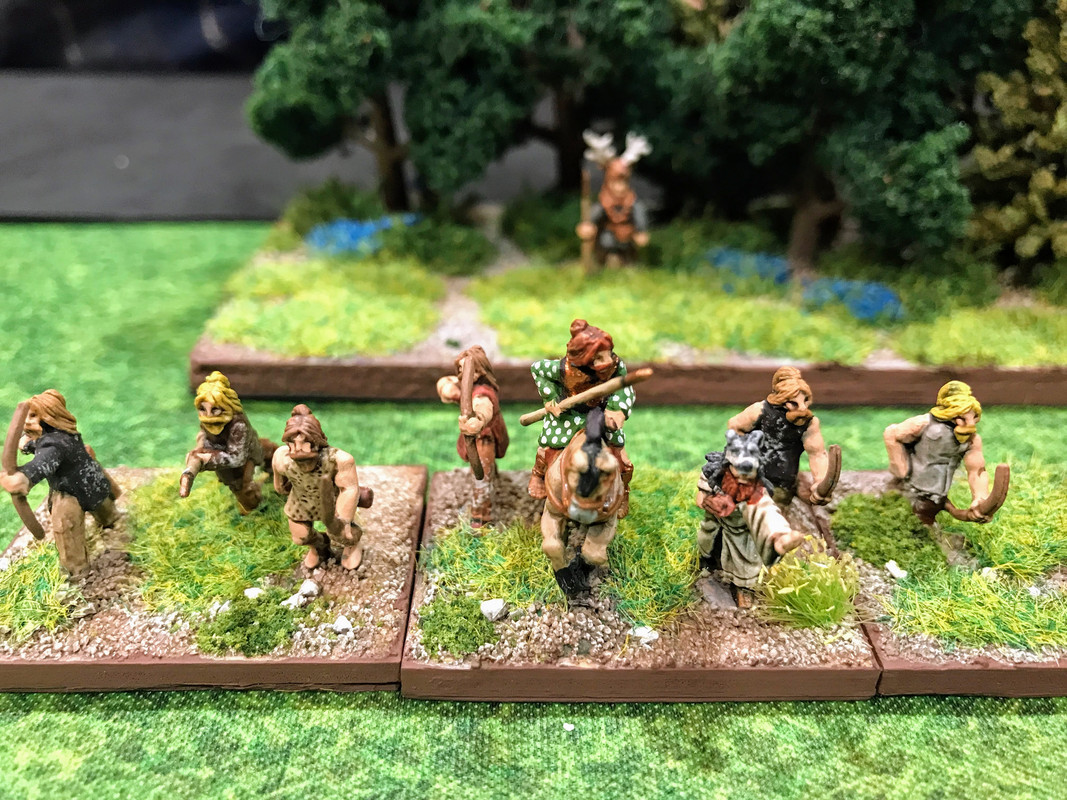
The Bell Beaker general and camp.

Another view.
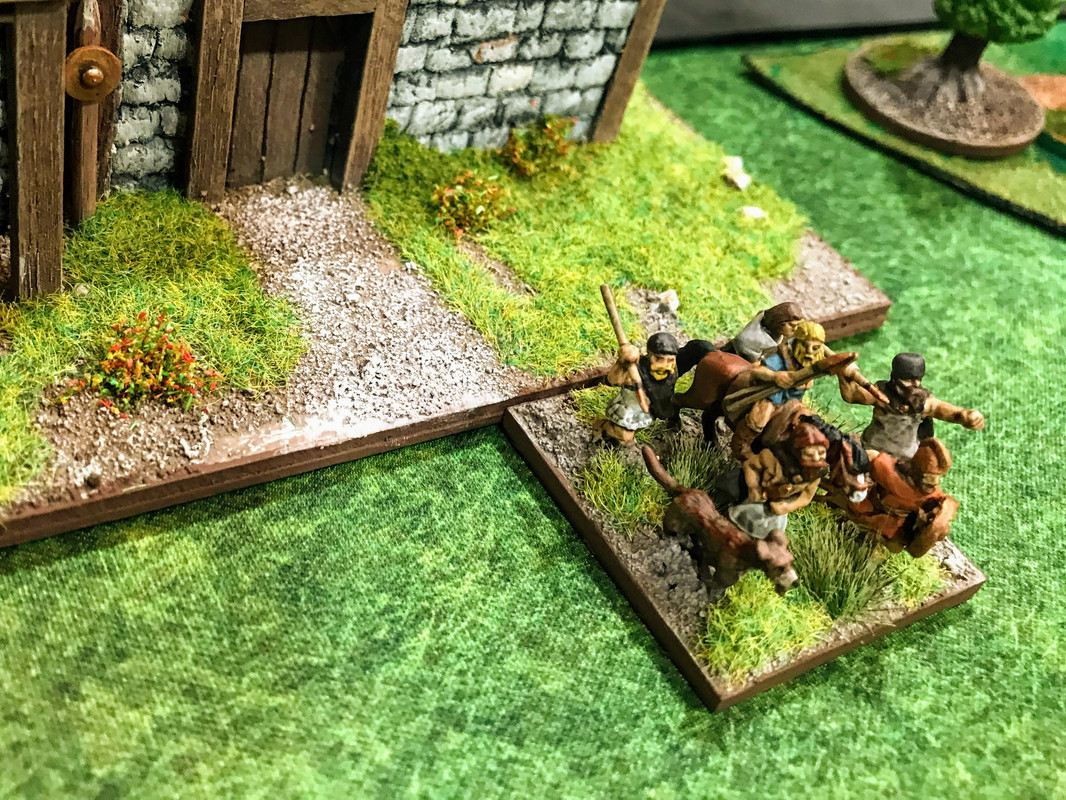
The slow-moving Horde was left at the camp.

Skirmishers enter the woods on the Urnfield right flank.
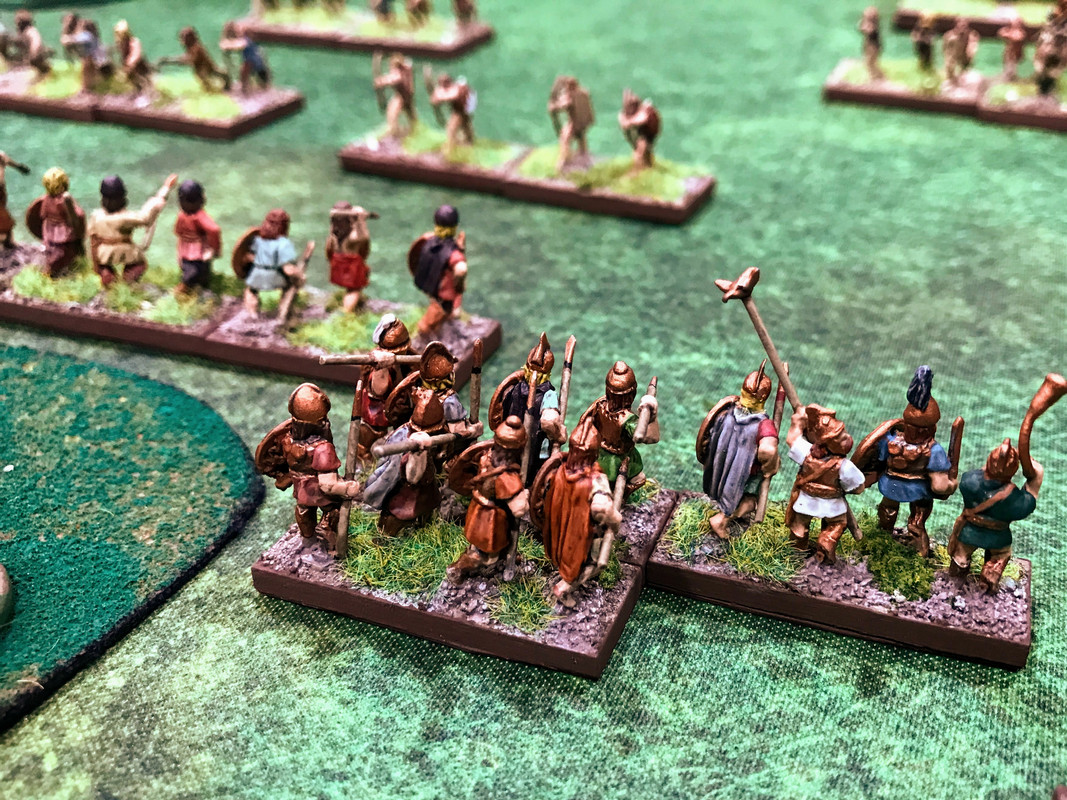
Urnfield Culture nobles prepare to deploy.

The invaders are broken up by the terrain, but the defenders don't have any fast-moving troops to exploit it.

The Bell Beaker left wing stretches off into the distance. They were unable to move fast enough to join the battle.
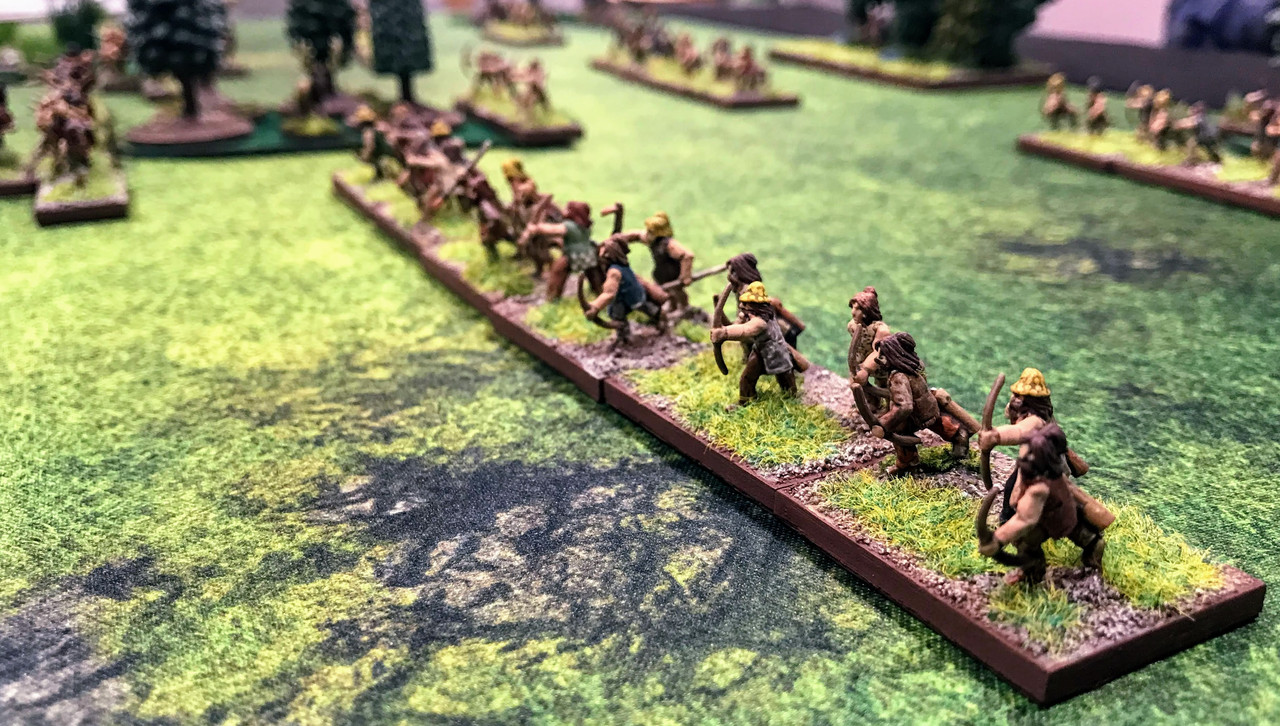
The Bell Beaker left flank.

View from the Bell Beaker camp.
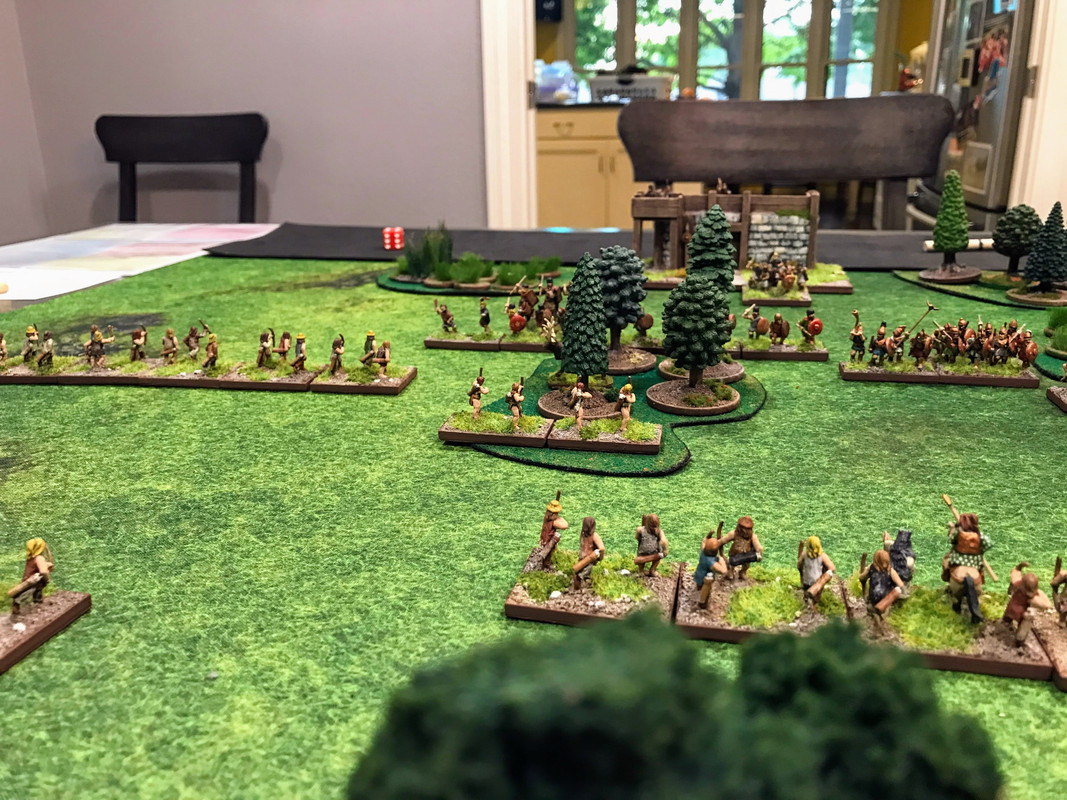
Another view.
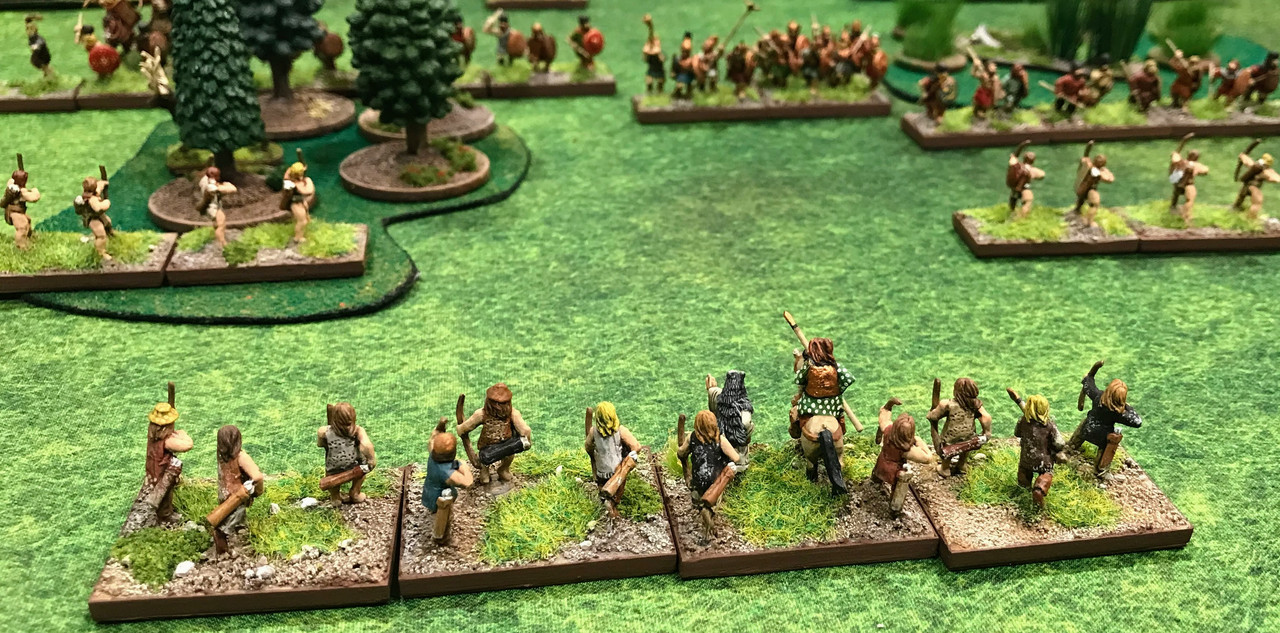
A closer view from the camp.

The Urnfield Culture nobles deploy into line of battle.

Bell Beaker forces advance in the center.

Contact is imminent.

Bell Beaker troops also attack in the woods in the center,
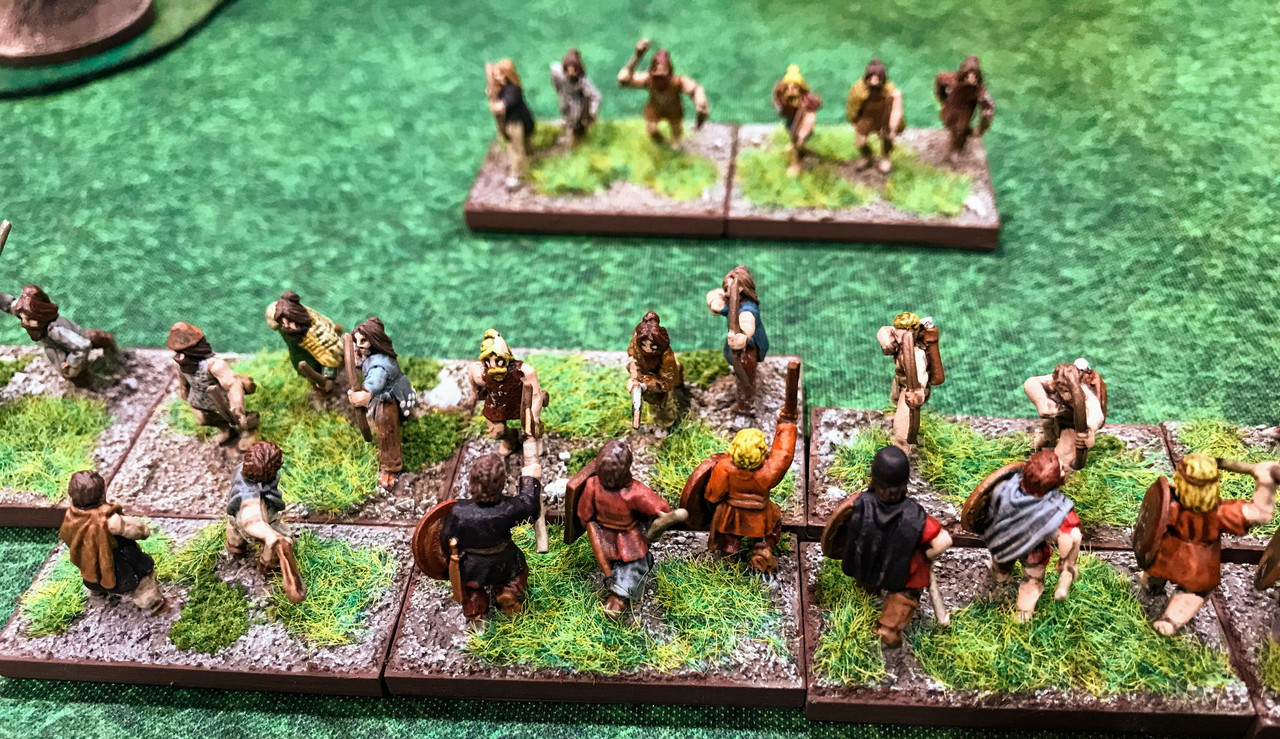
Bell Beaker troops attack in front of the marsh.
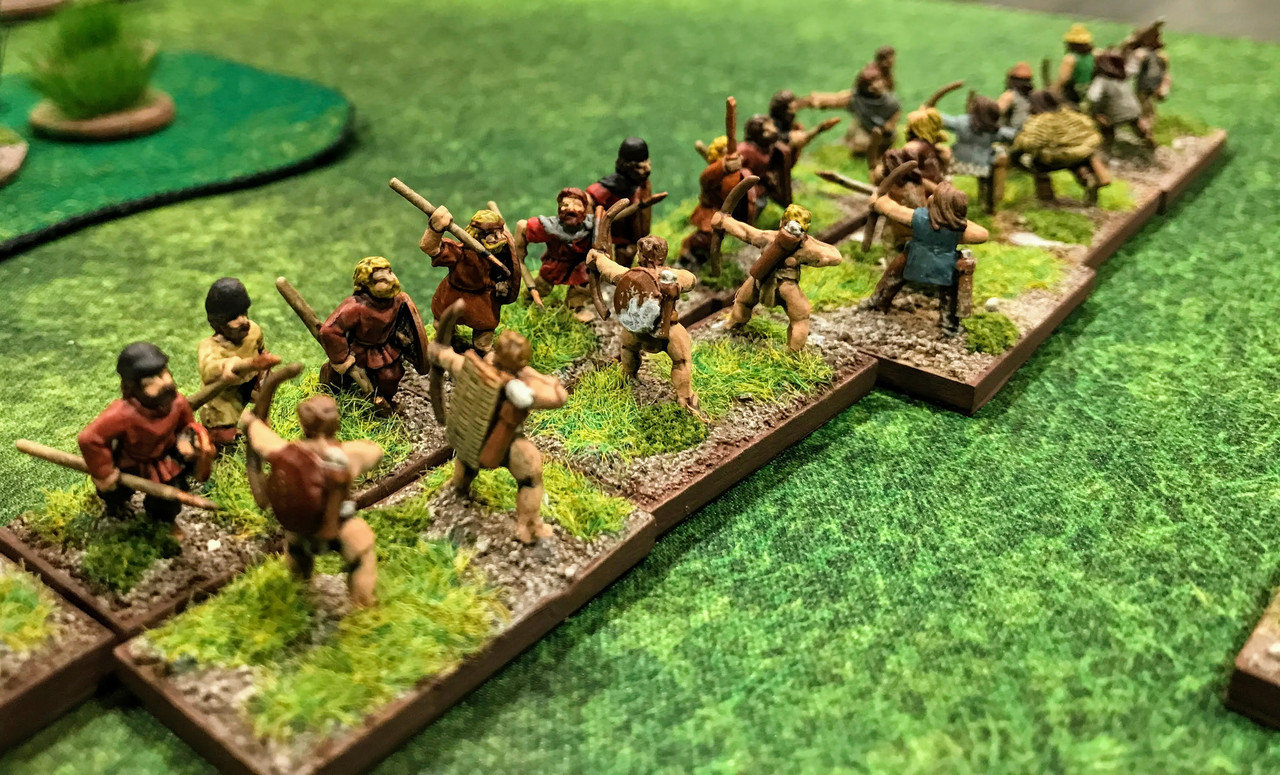
Another view.

Contact in the center is imminent.

The Urnfield Culture forces on the right flank are prepared to hold off the Bell Beaker left wing but never come into contact.
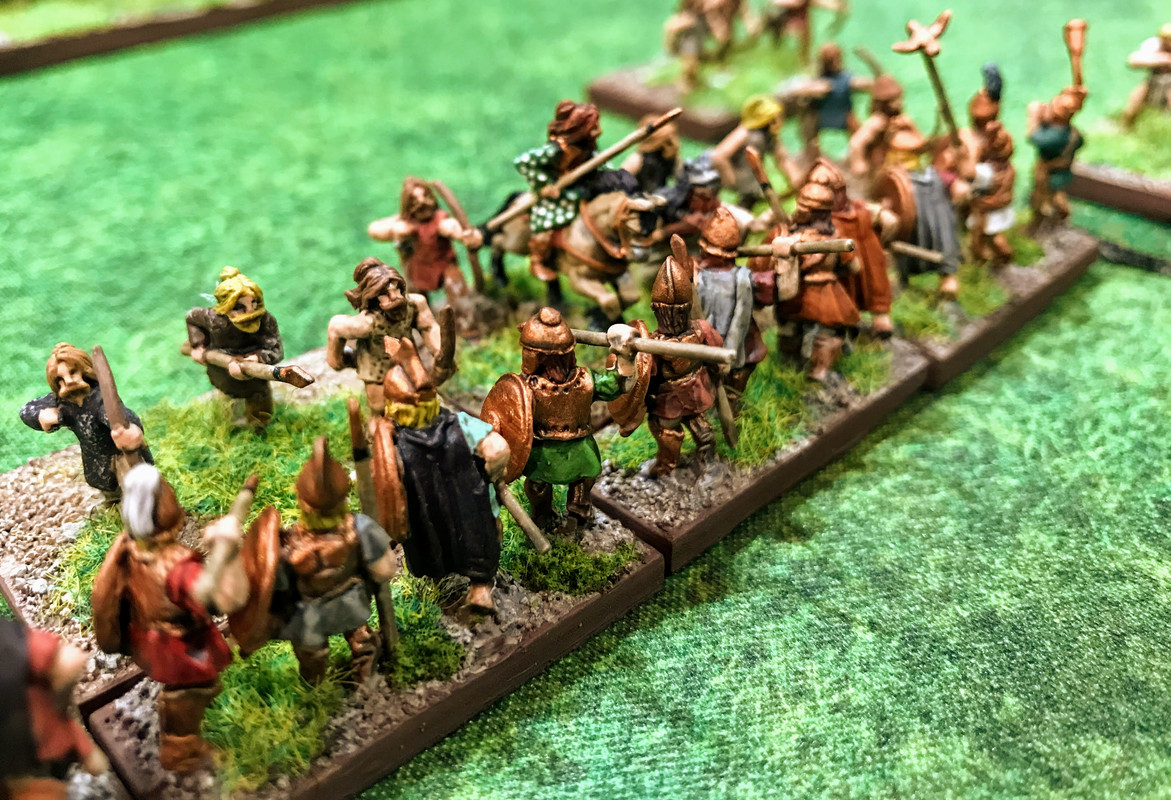
The Urnfield Nobles attack.
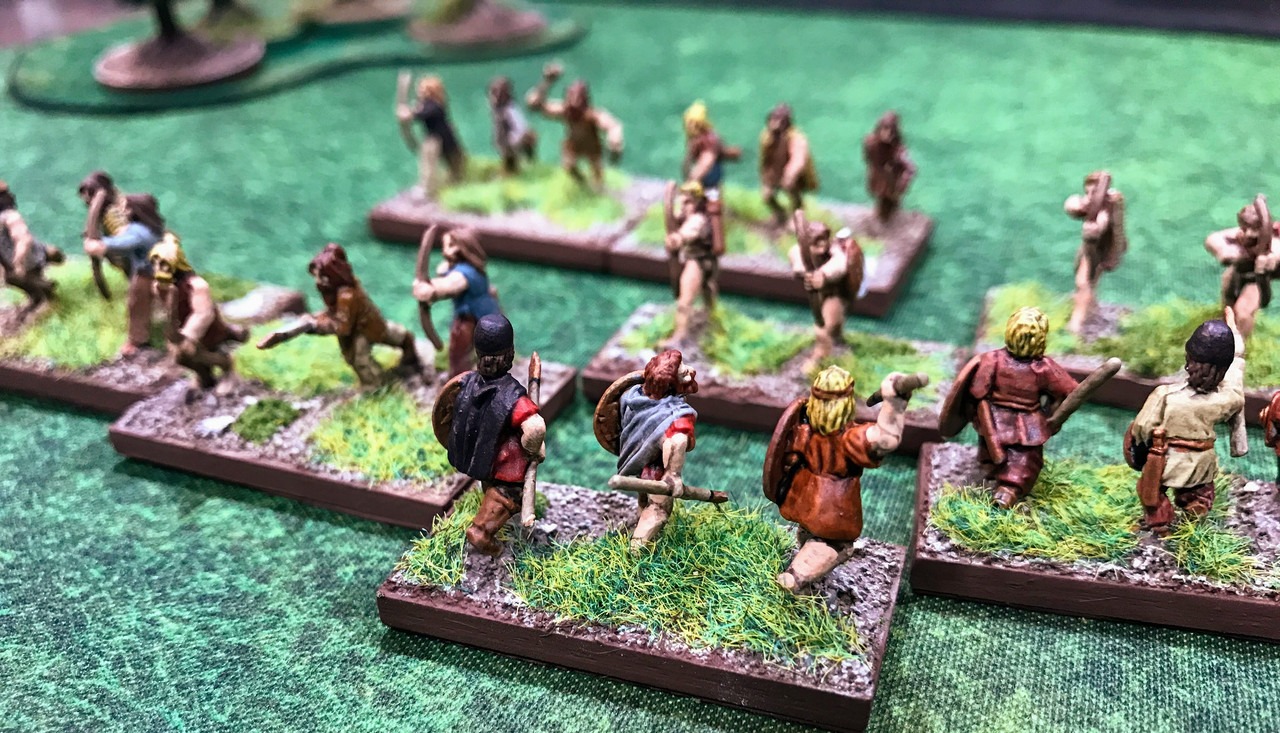
The Bell Beaker folk have some success near the marsh, killing some Light Foot and driving back the others.
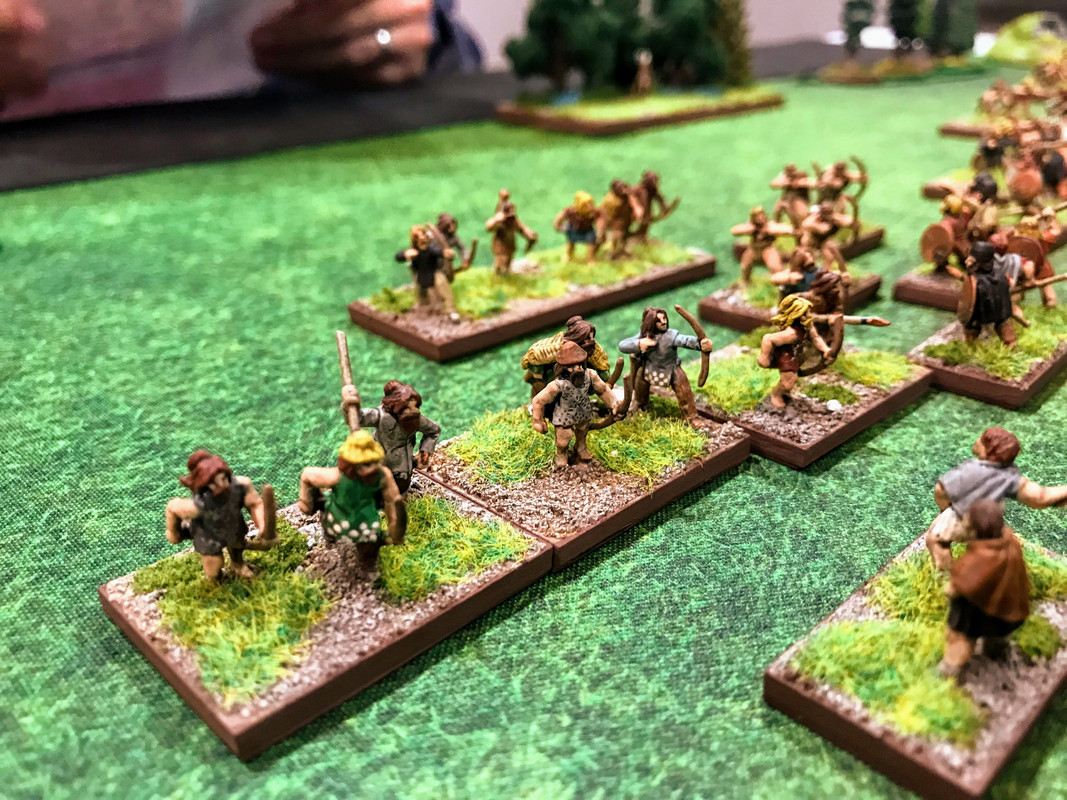
Another view.
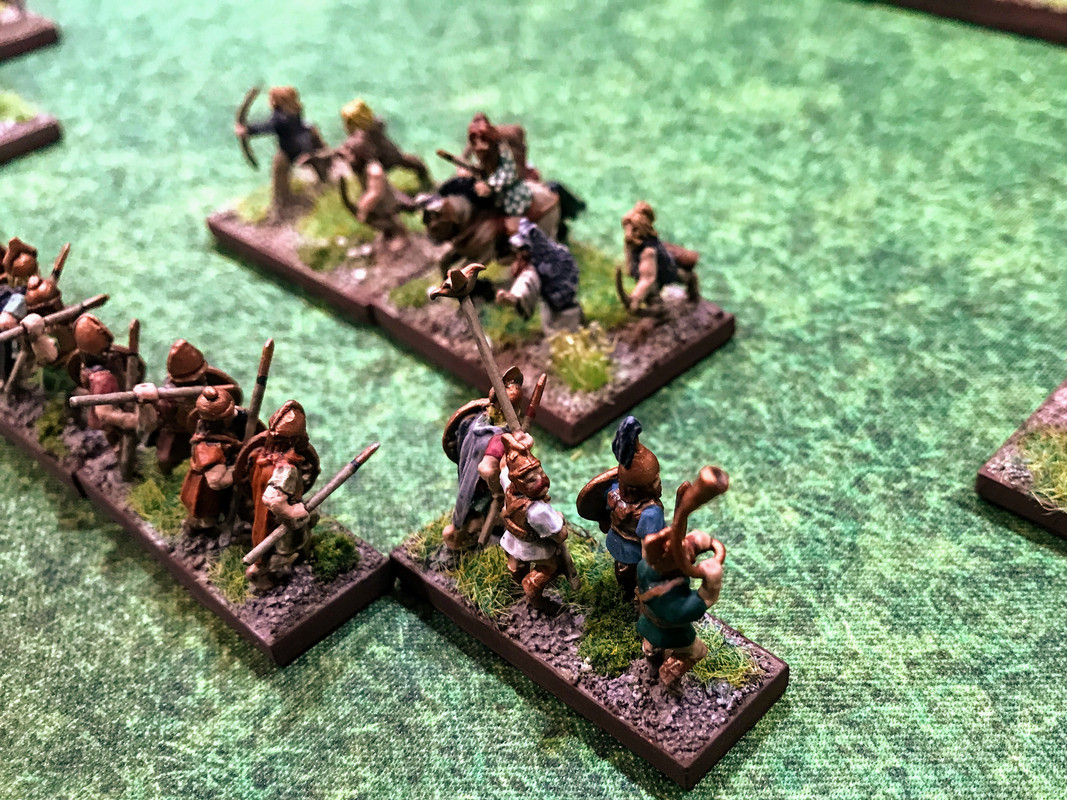
The Bow Levy have no chance against the Elite Foot.
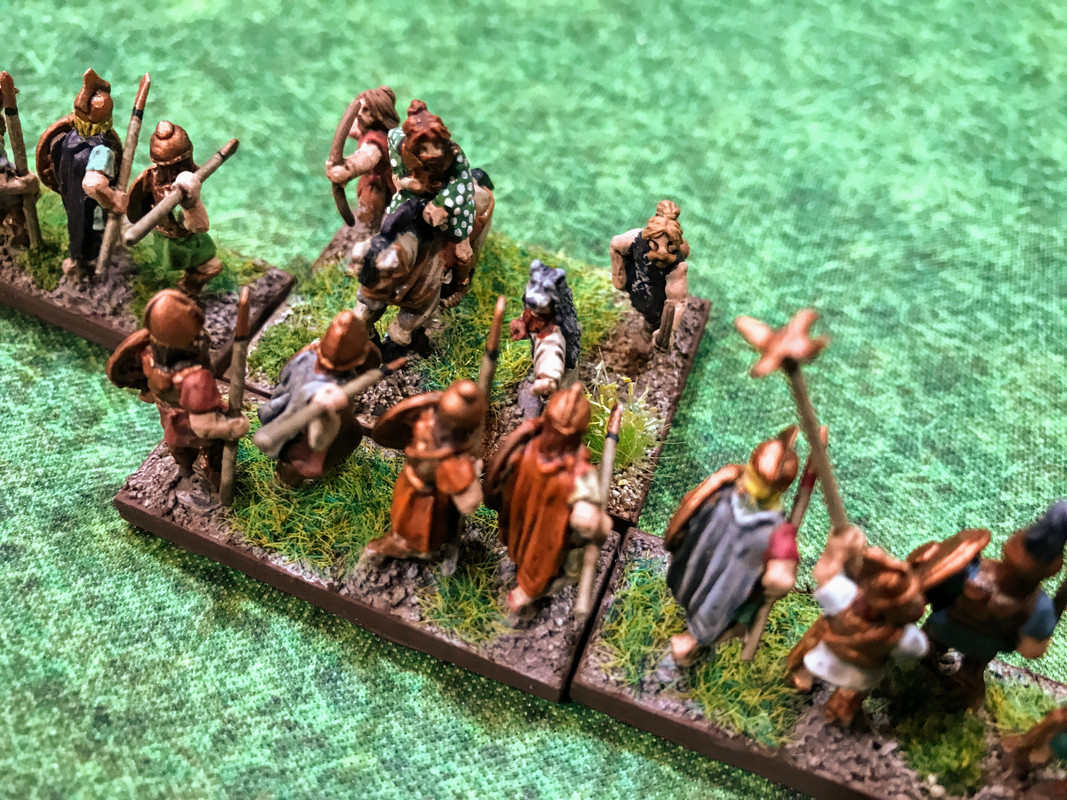
Death of the Bell Beaker general.
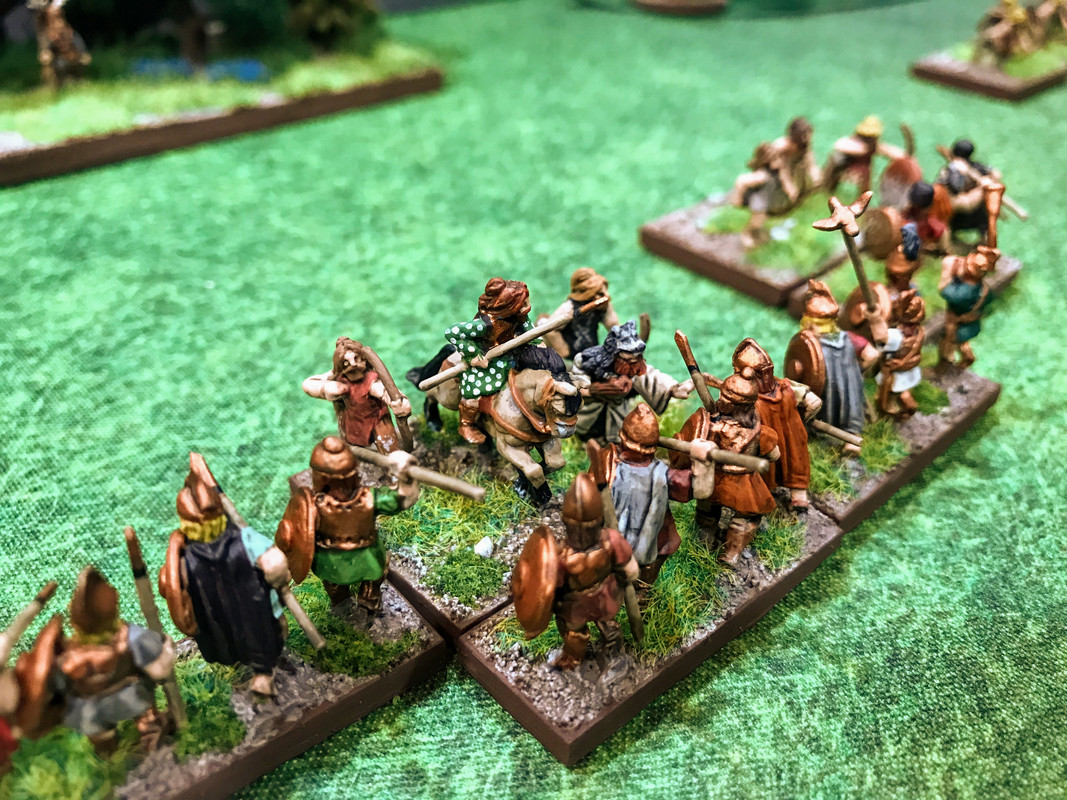
Another view.

Some troops are stil fighting but the cause is lost.
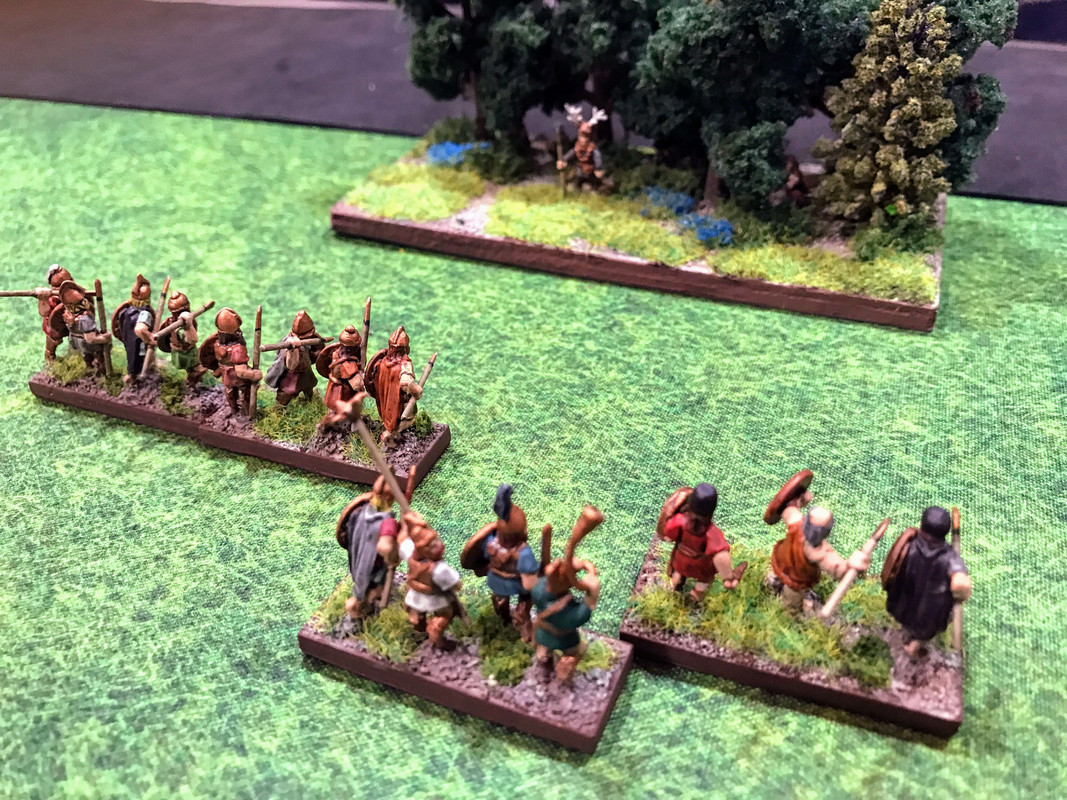
The Bell Beaker center is gone and the invaders advance on the camp as the battle ends.
Conclusion.
This battle was a clear victory for the Urnfield Culture, having lost only a single stand of Light Foot. We expected it to be so, and agreed beforehand that we would play two battles and switch sides the second time. The Bow Levy move so slowly that it was almost impossible to follow up on any local successes, or bring their larger numbers to bear.
We had another great time with this game. It took us about an hour from start to finish, including some time to look up rules questions.

